Watching horror films and reading horror novels is one way to give yourself a good spook, but nothing does the job better than a great horror game. Horror games are something that have been around since the birth of the industry, and they don’t seem to be slowing down any time soon.
Horror games are more than just an avenue to a cheap scare or two; there are games that heavily focus on surviving, hilariously fun horror-themed arcade games, haunting RPGs, and deep character studies.
To celebrate the beloved genre, we’ve taken a look through its rich history and chosen to highlight some of the best games of the bunch and some games that represent the direction of horror games as a whole.
First and Second Generation Horror Games
Haunted House (Magnavox Odyssey, 1972)
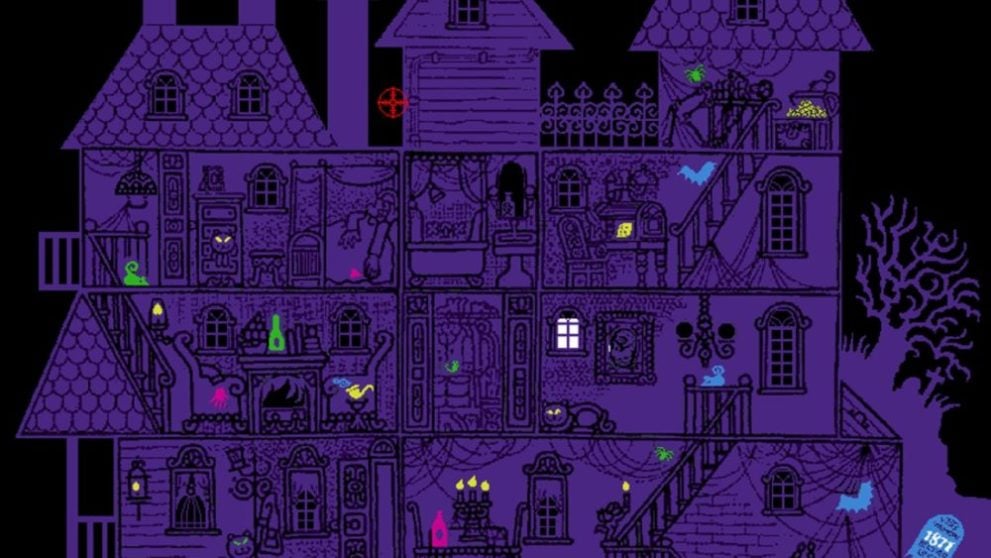
The very first home video game console of all time, the Magnavox Odyssey, had its own horror game, simply named ‘Haunted House.’
It can’t be stressed enough how primitive the graphics were on the Odyssey; the system was only able to display a few different dots on the screen. That’s why the game was packaged with an overlay of a haunted house that you would place on the screen to give the game a little more pizazz.
Haunted House was a two-player game in which one person plays as the ghost and has to hide a treasure, while the opponent plays as the detective whose job it is to find the treasure.
AX-2: Uchuu Yusousen Nostromo (PET 2001/PC-6001, 1981)
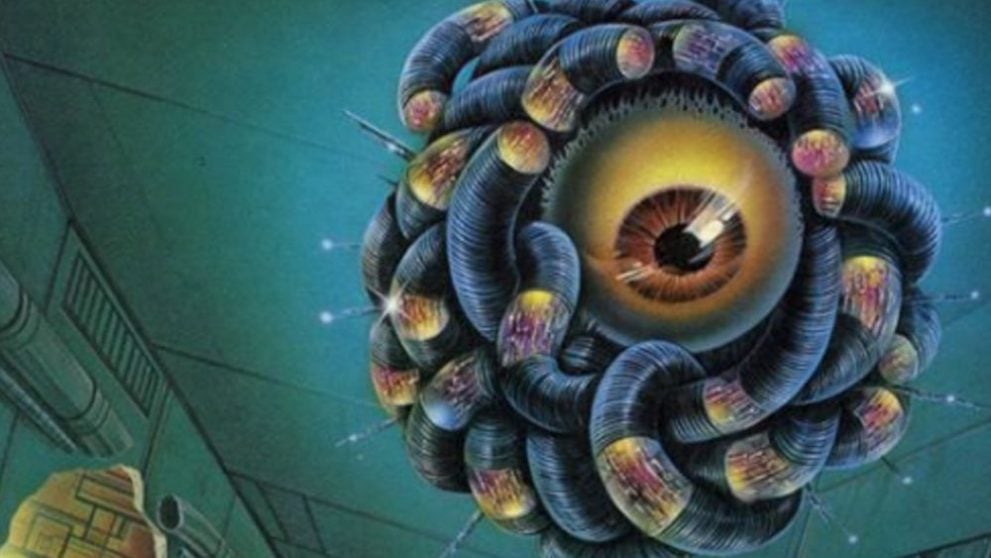
While Haunted House is credited as being the first horror game, AX-2 Uchuu Yusousen Nostromo is the first survival horror game.
Developed by a Japanese university student, Akira Takiguchi, and inspired by Alien, Nostromo involved a player trying to escape a spacecraft that had been boarded by an alien.
The alien was invisible and would only show up when the player is close. It was a rather obtuse game, requiring the player to collect certain items in order to complete it. If you reached the end without the required items, tough luck, you’re dead.
3D Monster Maze (Sinclair ZX81, 1982)
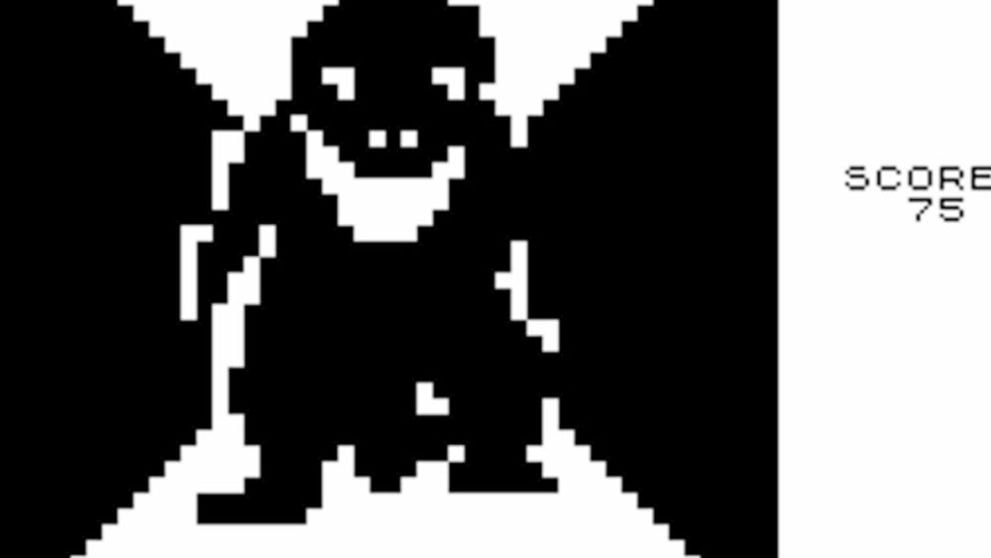
This early horror game was one of the first 3D games for a home computer. This doesn’t mean that you’ll be able to find any polygons to speak of, mind you, just that it was one of the first games to incorporate a Z-axis.
3D Monster Maze sees you working your way through a maze while trying to avoid a bloodthirsty T-rex. As the T-rex gets closer his anxiety level rises, and occasionally the text “RUN HE IS BEHIND YOU” will appear on screen. Sounds terrifying.
Games like Clock Tower and Amnesia where something is actively chasing you are very popular among horror fans, and it all started with 3D Monster Maze
Halloween (Atari 2600, 1983)
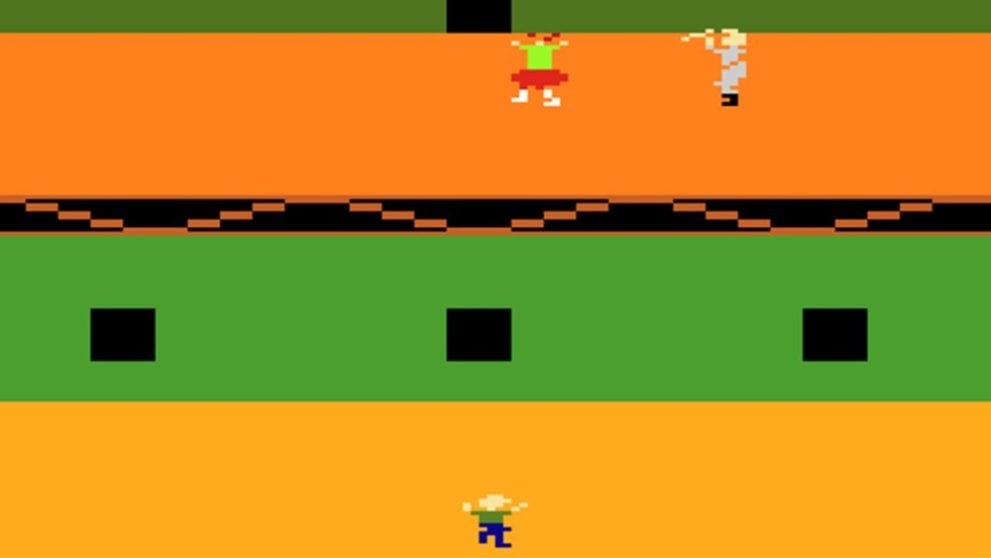
Before Mortal Kombat, there was Halloween for Atari 2600, one of the most violent video games for its time.
Similar to other horror games of the time, Halloween requires you to perform a certain task while being chased by a monster. The monster in this case is the psychotic Michael Myers.
Should you be caught by Mr. Myers, your head will explode. To think an 1983 Atari 2600 game could actually be more gory than the movie it’s based on.
This game also gets props for faithfully recreating the Halloween theme song with little more than the Atari’s bloops and bleeps.
Third and Fourth Generation Horror Games
Sweet Home (Famicom, 1989)
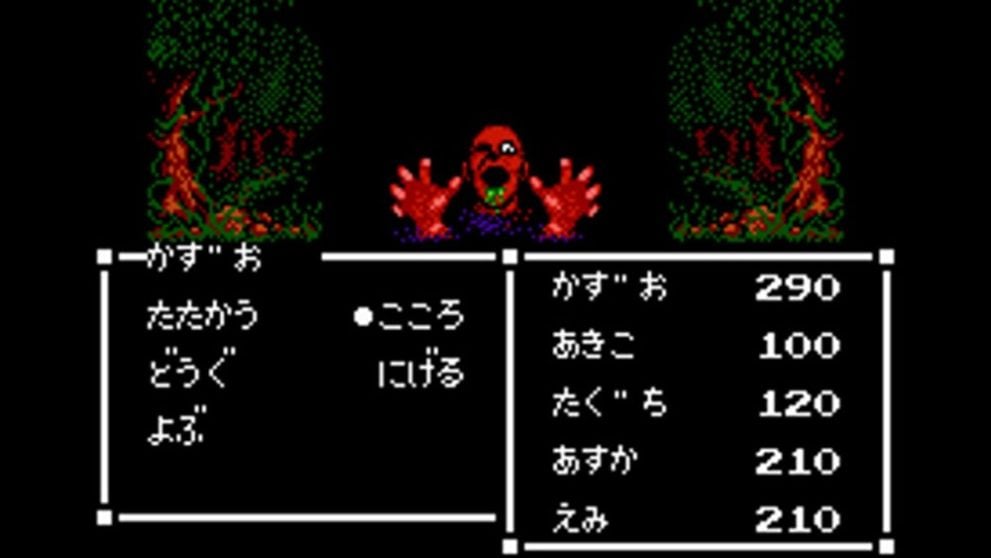
Before Resident Evil, there was Sweet Home. In terms of gameplay, they don’t share much in common, but the character design and story served as the inspiration for the monumental horror game.
Sweet Home is an RPG developed by Capcom and based on a Japanese horror film of the same name. RPGs and horror is a match made in heaven that we really need to see more of.
Unfortunately, possibly due to its source material, Sweet Home was never made available outside of Japan. A remaster or port to current systems would be a great way to honor the game’s legacy. Make it happen, Capcom.
Alone in the Dark (MS-DOS, 1992)
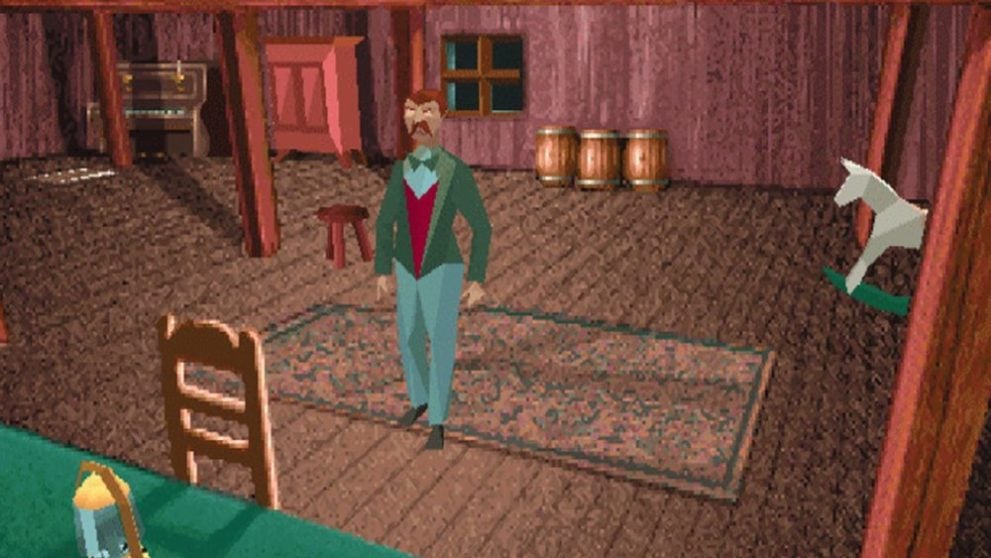
It may not have much relevance nowadays, but there was a time when Alone in the Dark was one of the most well-known horror franchises, up there with the likes of Resident Evil and Silent Hill.
Private investigator Edward Carnby takes to a haunted mansion in order to see what all of the fuss is about. Needless to say, haunted happenings happen.
It’s a traditional point and clink adventure game in which you need to collect different objects in order to solve different puzzles. It’s a blast to see just how many ways you can accidentally die in this game —there are a ton.
The 7th Guest (MS-DOS/CD-i, 1993)
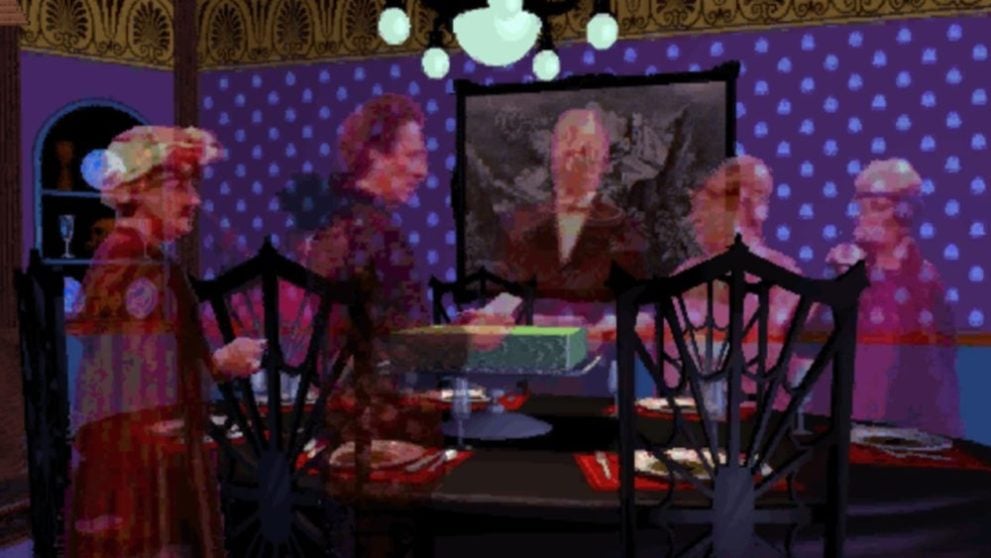
FMV games often get a bad rap today, and I don’t think it’s unfair to say that these types of games are an acquired taste.
They certainly have a high level of cheesiness, which is something that you could also say about many 80s and 90s horror flicks. Therefore, a 90s FMV horror game could arguably be the cheesiest thing on the planet. That’s what The 7th Guest is.
The live-action cutscenes weren’t the game’s only selling point; the pre-rendered graphics were also revolutionary for the time thanks to the use of the new CD-ROM technology.
Clock Tower (Super Famicom, 1995)
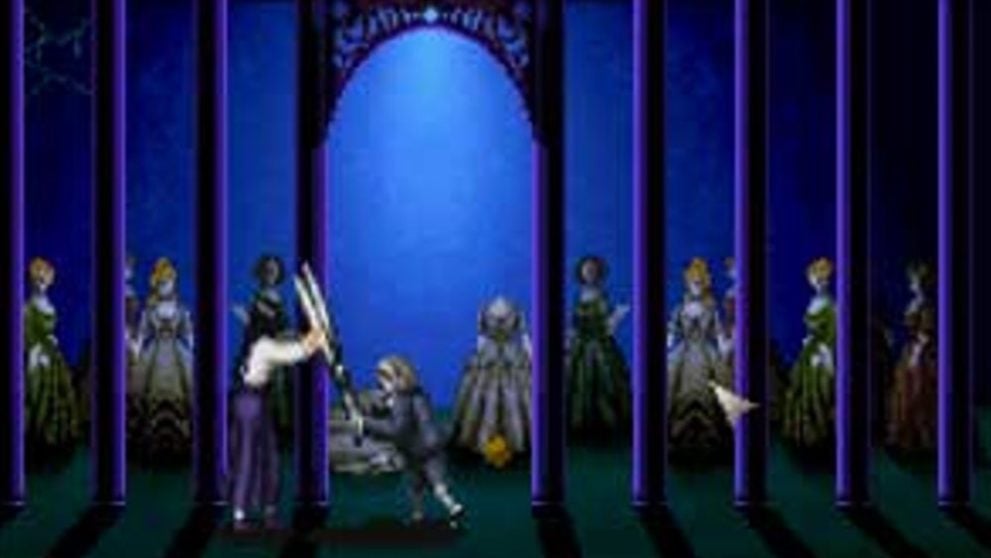
When people talk about 16-bit games with incredible atmospheres, Super Metroid is usually the one brought up, but it honestly doesn’t hold a candle to Clock Tower. It’s as close as you’ll get to a retro version of Amnesia: The Dark Descent.
It doesn’t matter that the game is on the Super Famicom —a system that been surpassed by the Saturn and PlayStation at this point— Clock Tower is terrfying.
Throughout most of the game, you’re under the constant threat of being caught by the Scissorman, and you have to hide from him at all costs. There are times when you have to watch the screen and just hope that he walks past the spot where you’re hiding.
Fifth Generation Horror Games
Resident Evil (PS, 1996)
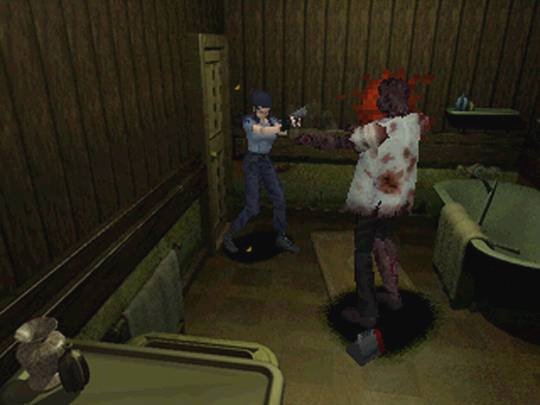
The game that began one of Capcom’s flagship franchises and still one of the most relevant to this day: Resident Evil.
Survival horror games came before Resident Evil, but its greater focus on action meant that bad ammo and item conservation could mess up your playthrough. Used too many ink ribbons early on? Too bad.
The in-game world of the first Resident Evil is a point of praise. It featured multiple buildings with a large number of puzzles. Exploring each and every room felt good and was vital to your survival. Going back to an area introduced new enemy types. Even if you thought you were safe, you weren’t.
Sure, the writing and voice acting is cheesy, but it’s awesome. “You were almost a Jill Sandwich.” You can’t beat that.
The House of the Dead (Arcade, 1996)
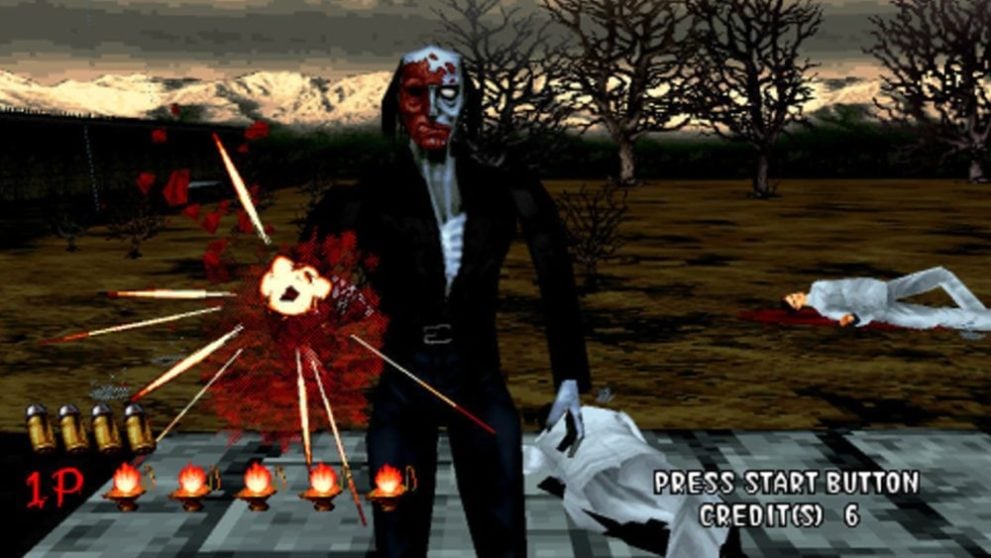
If you thought the voice acting in Resident Evil was bad, oh boy, you’ve got another thing coming. It really transforms The House of the Dead from a good game into a masterpiece.
Games like Virtua Cop and Time Crisis were fun and all, but they just don’t provide the satisfaction of tearing a zombie to shreds with just a couple of small handgun bullets. It’s over the top, but it’s amazing.
Growing up in the UK, playing an arcade game was a luxury. For some reason, a single credit on most arcade games costs £1 over here, which was about $1.50 in the 90s (I’m eternally jealous of the term “insert quarter.”)
You had to really think about what you were spending that £1 on. But for me, it was no question: The House of the Dead every time.
Parasite Eve (PS, 1998)

On the PlayStation, Squaresoft (now Square Enix) could do no wrong. Seeing their logo on a game almost always meant that you were in for something special.
So, Squaresoft, the PlayStation-era king of the JRPG, decided to do what Sweet Home had done before it: add horror elements to a JRPG. The result was damn awesome, of course.
The battle system is a sort-of blend of Resident Evil and Final Fantasy VII; it uses an active time bar for attacks, but you can run out of ammo if you’re not careful.
Sadly, there really aren’t enough horror RPGs, but there are a couple of good ones out there, such as Koudelka and Shadow Hearts.
Silent Hill (PS, 1999)

Silent Hill was undoubtedly one of the scariest, if not the scariest, horror games —or, heck, pieces of media in general— to have been released up until this point.
Silent Hill is to psychological horror what Resident Evil is to survival horror: top of its class.
Silent Hill’s music, art direction, and enemy design all add up to create something that is just really hard to play if you get scared easily. I wouldn’t think any less of anyone for playing this game with the lights on.
Sixth Generation Horror Games
Silent Hill 2 (PS2/Xbox, 2001)
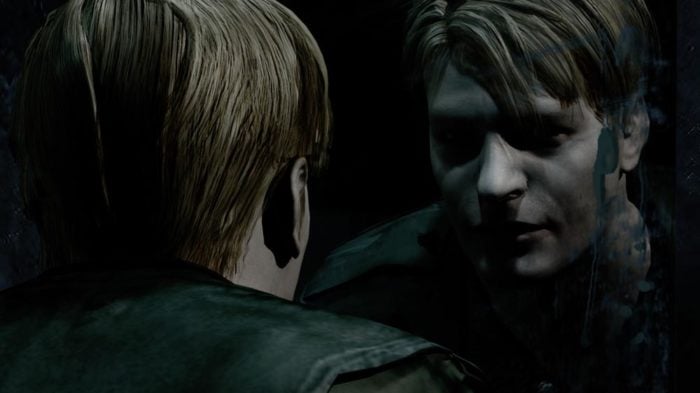
Silent Hill 2 is the magnum opus of the Silent Hill franchise, and it is maybe the greatest horror game ever made.
It’s not just a game about bashing demonic beings (although that is hella fun). It explores the themes of identity, diving deep into the tormented past of James Sunderland and bringing to life his innermost fears right before his eyes. It’s a twisted tale that still disturbs us.
One word of warning, try to avoid the HD collection on PS3 and Xbox 360; they were infamously botched.
Fatal Frame (PS2, 2001)
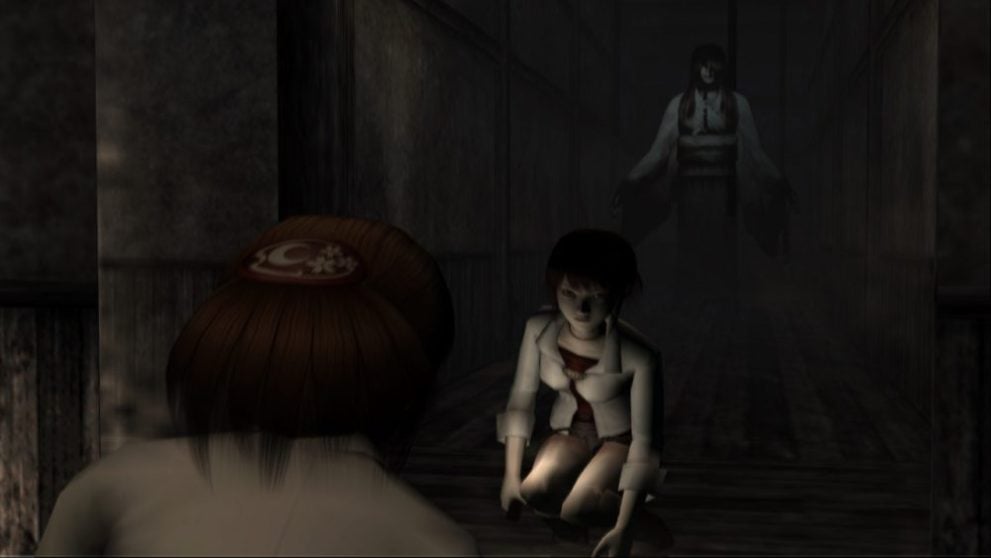
Despite what the title screen of the US version will tell you, Fatal Frame is not based on a true story. To be honest, it doesn’t matter if its based on a true story or not, the pixels on the TV screen are still frightening as all hell.
Fatal Frame introduces a really cool mechanic that sets it apart from all other horror games: the Camera Obscura. You have to take photographs of ghosts in order to capture and purify their spirits, forcing you to look them right in the eyes even if you don’t want to.
The series uses typical Japanese horror, so if you’re freaked out by films like The Ring and The Grudge, you might want to give this one a miss.
Eternal Darkness: Sanity’s Requiem (GC, 2002)
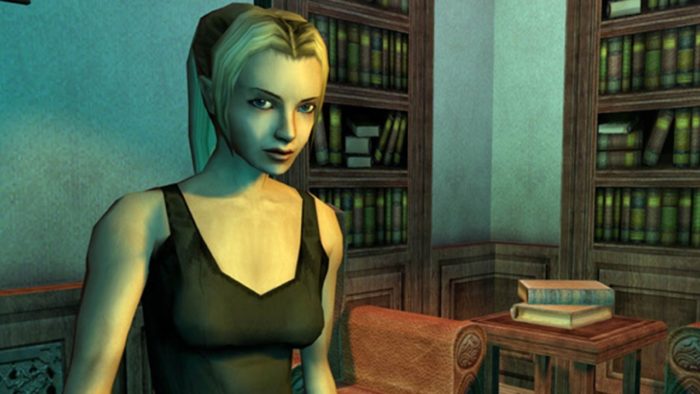
Eternal Darkness is a great game overall, but there is one mechanic that stands out above all: the sanity meter.
The sanity meter is separate from your health and can be drained on its own. When it gets too low, different fourth wall-breaking sanity effects will begin to occur. For example, your head might just fall off. That’s it. Bye, head.
The effect that drove me crazy was the game pretending to delete my save. Turns out it was all a trick, but it’s probably the most scared I’ve been in any game ever.
If you ever truly want to mess with a person’s heart, go for their save data.
Resident Evil 4 (GC/PS2, 2005)
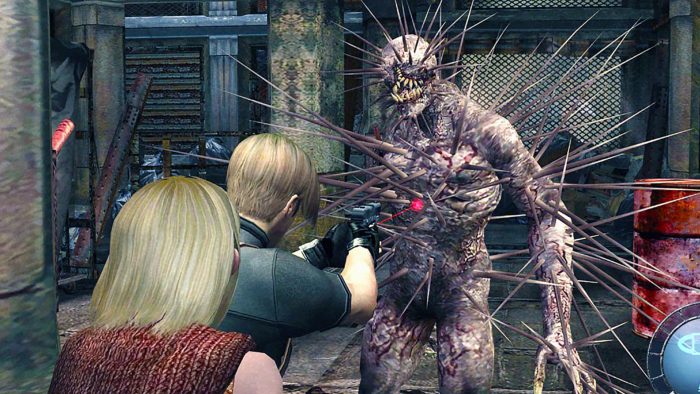
Resident Evil 4 was a very important game for the horror genre, for better or for worse, depending on your tastes.
Resident Evil 4 was quite a bit different to previous entries. Combat was now done from an over-the-shoulder, third-person perspective, and the amount of enemies was dramatically increased.
The game seamlessly blended action with survival horror, broadening the appeal of the series and making it one of the highest-rated games of all time.
Seventh Generation Horror Games
F.E.A.R. (PC, 2005)
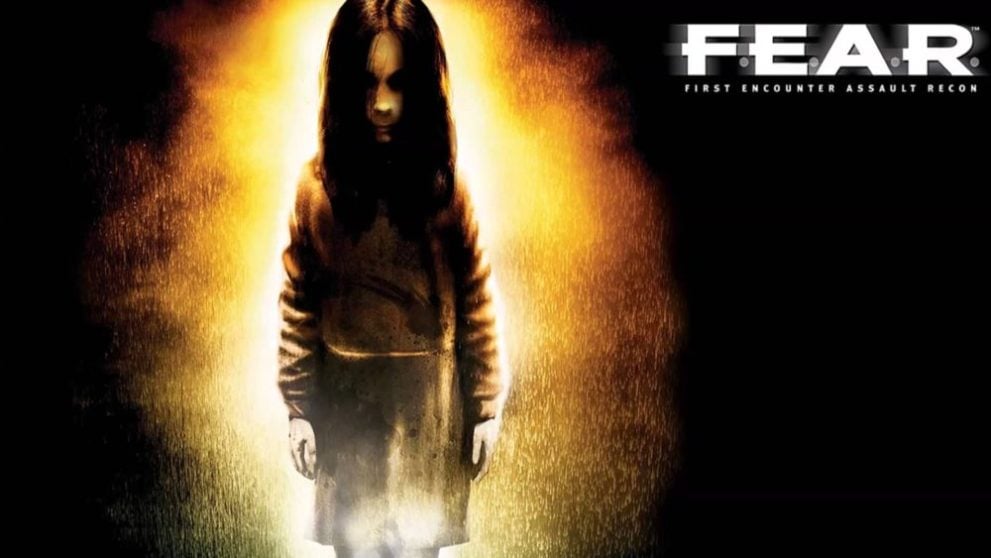
While Resident Evil 4 was lighting fires in the third-person shooter department, the first-person shooter was by no means slouching behind. Massive games like Halo 2 and Half-Life 2 showed that first-person shooters were here to stay.
Knowing this, the team at Monolith Productions went a little outside of the box with their next entry into the genre. F.E.A.R. plays like a typical FPS, but with a bit or a horror spin to it.
The main character, Paxton Fattel, experiences glimpses of paranormal phenomena, often taking shape in the form of hallucinations of Alma. When you’re playing the game knowing that this creepy little girl can show up at any time is more than a little unnerving.
The first-person perspective in F.E.A.R. definitely shone a light on how effective the perspective can be for horror games. The closer a paranormal being is to the camera, the more frightening it is. In fact, after this point, a majority of horror games were in first person.
Left 4 Dead (Xbox 360/PC, 2008)
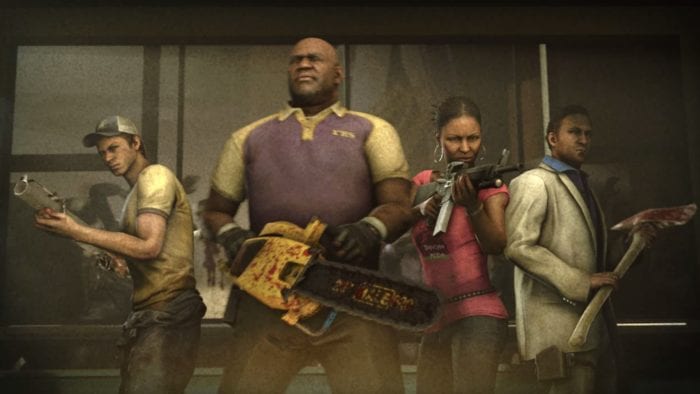
Zombie fever was in full swing during the seventh generation. Although, to Left 4 Dead’s credit, it released before the over-saturation, and maybe it played a hand in the amount of zombie games that proceeded it.
Left 4 Dead put fun over fear. Although, bumping into the Witch was definitely terrifying.
Before Left 4 Dead, horror games were predominantly single-player affairs, but that definitely wasn’t the case following Left 4 Dead. Surviving a zombie apocalypse with buddies is just way too much fun.
Amnesia: The Dark Descent (PC, 2010)
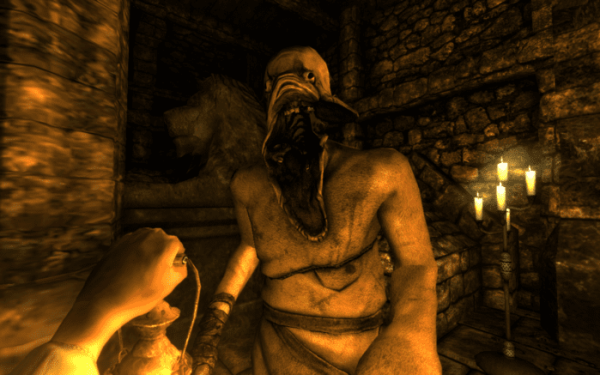
Amnesia was quite the talk of the town when it came out. It’s hard to argue that horror games hadn’t been seeing a stronger focus on action since 2005’s Resident Evil 4, but Amnesia: The Dark Descent was nothing like this at all.
In Amnesia, you’re constantly being chased by different monsters in the castle while you’re trying to work your way around and solve puzzles. However, you don’t have any weapons to fight them with. Like Clock Tower, your only real choice is to run and hide.
The amount of oil and tinderboxes in the game is limited, so you can’t always rely on your lantern. Sometimes, dark corridors have to be traversed blindly to preserve supplies. It can be pretty damn frightening.
Slender: The Eight Pages (PC, 2012)
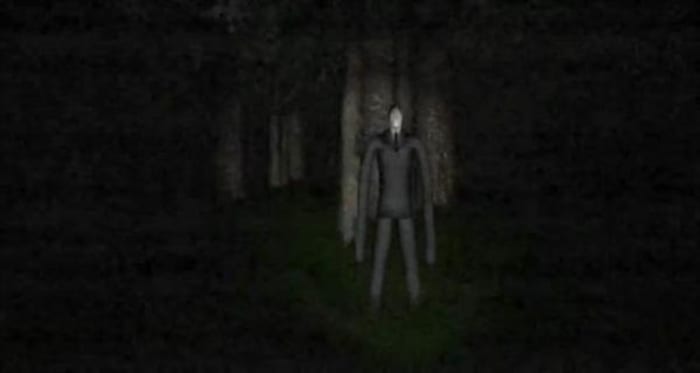
Slender: The Eight Pages, originally known simply as “Slender,” had the perfect release. With the rise of viral videos and let’s play YouTube channels, everyone knew about Slender, the supposed “scariest game of all time.” It also helped that the game was completely free.
The game was super simple: wander the woods and complete eight pages while avoiding the Slenderman. It was almost impossible to beat, though, as he got faster and more aggressive with each page you collected.
Games like Amnesia and Slender show that people like the thrill of being chased. It doesn’t really matter what you’re being chased by. Just look at games like Baldi’s Basics.
Eighth Generation Horror Games
P.T. (PS4, 2014)
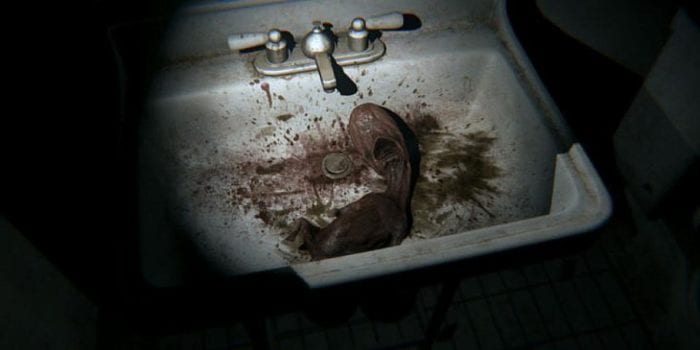
P.T. isn’t a full game by any means (it was merely a demo for the then upcoming Silent Hills), but it is one of the most finely-crafted pieces of art I have ever experienced.
With the latest console generation, video games look incredibly good. We’re coming dangerously close to uncanny valley levels of realism. I think this is why horror games have just become so much scarier this generation.
It’s not just the stunning graphics and the horrific art direction that makes it all work, it’s also how it uses the medium of video games to mess with the player.
For example, there’s no real indication as to how to fully open slightly-opened door. So, I’ve let my guard down as I fumble around the controller trying to figure out what to do. Finally, I click the R3 button, and while my guard’s down, Lisa comes out and slams the door. Lights on, PS4 off, tears pouring.
The scariest thing is that this crowning achievement will only fade into obscurity. For never was a story of more woe than this of Guillermo Del Toro and his Hideo.
Until Dawn (PS4, 2015)

Supermassive Games were really on to something with Until Dawn: a true B-movie video game if there ever was one.
However, unlike B-movies, this is a video game, which means we have player agency. In Until Dawn, it’s up to the player who lives or dies.
If you’re liking one character more than another, that’s no problem, just let the other person die. That’ll show them for being an unlikeable character.
But, like a B-movie, Until Dawn has its fair share of cheese, including plenty of “don’t go in there” moments. It’s a fun game to play through with a friend or two.
Dead By Daylight (PC, 2016)
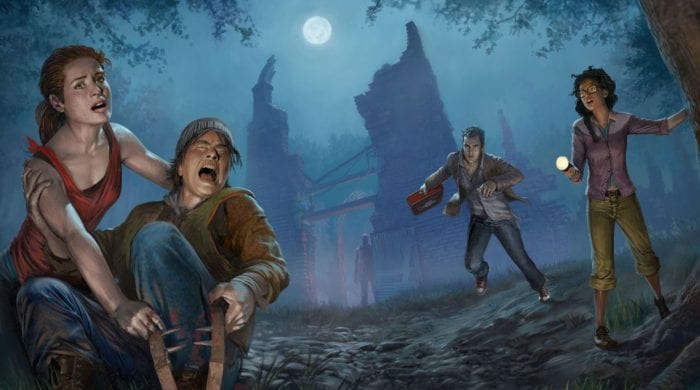
Dead By Daylight is a multiplayer horror game unlike any that have come before it. For some players, their job is to escape with their teammates, while it is another player’s job to find and kill the players who are trying to escape.
It’s similar to something like Evolve but with a horror twist.
The players trying to escape have to do so by activating a number of generators around the map. It is important to stay hidden from the killer, and traps can be used to help you in doing so.
Resident Evil VII: Biohazard (Xbox One/PS4/PC, 2017)
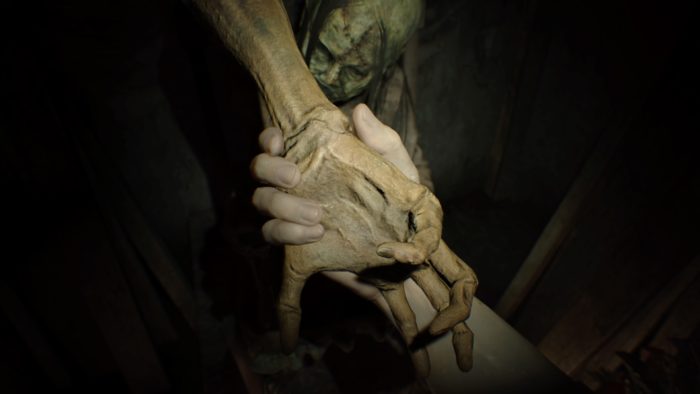
After Resident Evil 4, the franchise became indecisive about what it wanted to be. Some games, like Resident Evil 6 and Operation Raccoon City, wanted to be strictly action games, while others, like the Revelations games, still dabbled in survival horror.
Resident Evil VII set the tone from the get-go: balls to the wall scarefest.
It’s basically the Silent Hills that we never got, all the way down to the playable demo. The first-person perspective, realistic art style, and in-your-face nature of the scares makes for one uneasy experience.
Resident Evil VII takes it a step further allowing you to play the game entirely in VR. For some, this might be too much to handle, but for those who can’t get enough heart attacks, this is definitely the way to play.
There’s plenty more horror games we’d loved to have talked about, but alas, there are just too many great ones to cover here. Be sure to let us know about some of your favorites in the comments below!
